First Sokoban program
From Sokoban Wiki
m (→Start of the game) |
(→Program features) |
||
| Line 40: | Line 40: | ||
After a level has been solved it's necessary to press F1. | After a level has been solved it's necessary to press F1. | ||
| - | This | + | This makes the program check whether the level has been solved, in which case the player can proceed to the next level. |
| - | + | If F1 is pressed when the level hasn't been solved, the player is given the choice between exiting the game and restarting the level. | |
| - | The player has 5 attempts to solve the level, | + | The player has 5 attempts to solve the level, meaning it's possible to restart a level 4 times. |
| - | The program | + | The program erroneously makes the dots representing the goal squares disappear when the player walks over them. Therefore, it's necessary to be careful where to move the player. |
= Levels = | = Levels = | ||
Revision as of 04:49, 17 June 2022
The first commercial Sokoban game was published in December 1982 for NEC PC-8801.
The selling agency was Thinking Rabbit, a software house based in Takarazuka, Japan.
The game was distributed as cassette tape media.
Contents |
Start of the game
Screenshot of the entry screen of the game:
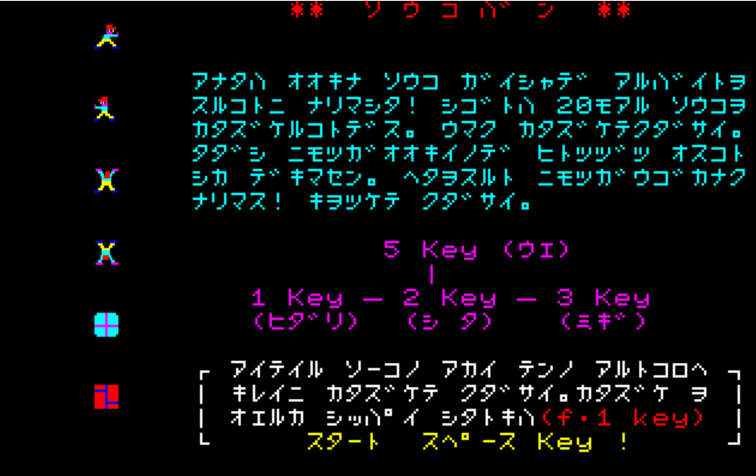
** Sokoban ** You have started a part-time job in a large warehouse company. Your job is to organize 20 warehouse buildings. You must organize the boxes in the buildings. The boxes are so large that you can only push them one at a time. If you do a bad job the boxes will get jammed. Hence, you have to be careful. 5 Key (Up) 1 Key (Left) 2 Key (Down) 3 Key (Right) The boxes must be placed on the red dots. When the job is done, or if you want to start over again, press the F1 key. Press the Space key to start!
Program features
The game offers 20 levels to be played.
After a level has been solved it's necessary to press F1. This makes the program check whether the level has been solved, in which case the player can proceed to the next level.
If F1 is pressed when the level hasn't been solved, the player is given the choice between exiting the game and restarting the level.
The player has 5 attempts to solve the level, meaning it's possible to restart a level 4 times.
The program erroneously makes the dots representing the goal squares disappear when the player walks over them. Therefore, it's necessary to be careful where to move the player.
Levels
The first 10 levels are regular Sokoban levels.
Levels 11 to 20 contain some destructible walls.
These special walls look the same as the other not destructible walls.
However, the player can walk over these walls from specific sides and thereby destroy the walls.
This is level 15 in the original game:
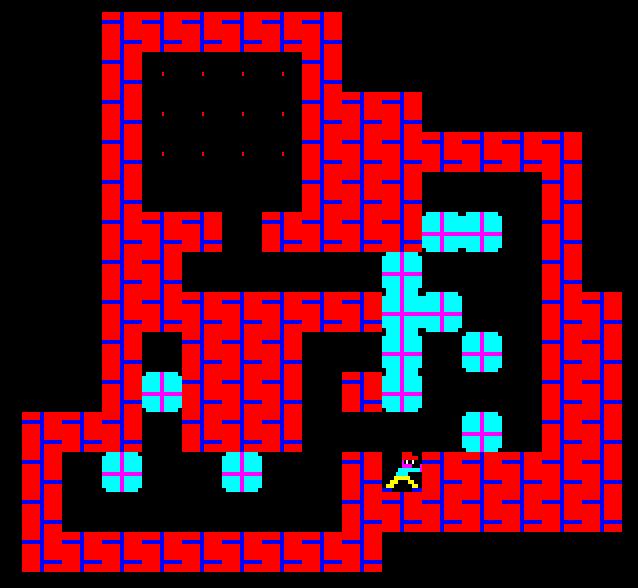
This is the same level having the destroyable walls highlighted in blue and the direction they can be walked over indicated by small arrows:
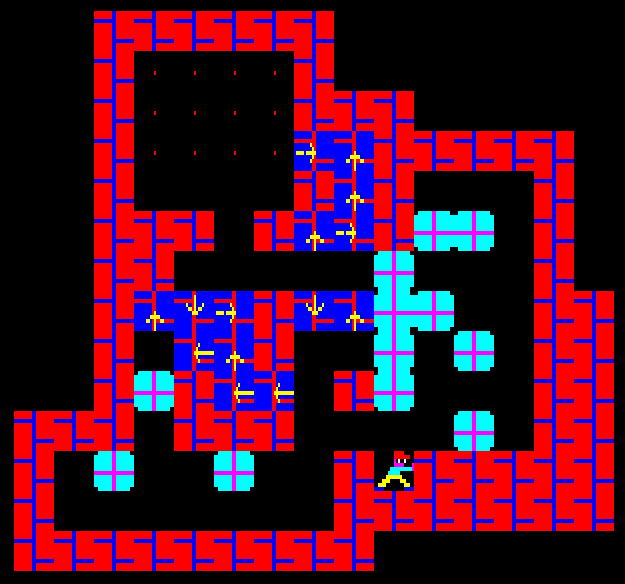
The levels first become solvable after destroying these special walls.
The walls can only be destroyed when entering them from one specific side.
However, in level 20 there is one exception.
Level 20 contains a destructible wall at the top right which can be entered from left and right:
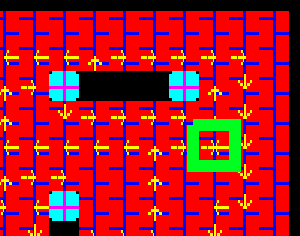
Later versions of Sokoban don't contain this special destructible wall type anymore.
Source code
The source code of this first Sokoban game was printed in the 1987 book "THE 倉庫番", pages 117-122.
The program was written in BASIC.
Game solved
After the last level has been solved (and F1 has been pressed so the game checks if the level is solved) the game prints "Congratulation":
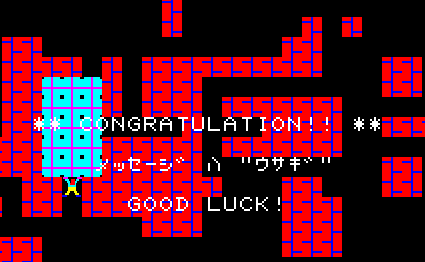
Interview with Hiroyuki Imabayashi
You can read an interview with Hiroyuki Imabayashi on shmuplations.com/thinkingrabbit.
Carlos Montiers Aguilera published his interesting Internet conversation about Sokoban with Hiroyuki Imabayashi at: www.sokoboxes.com.
